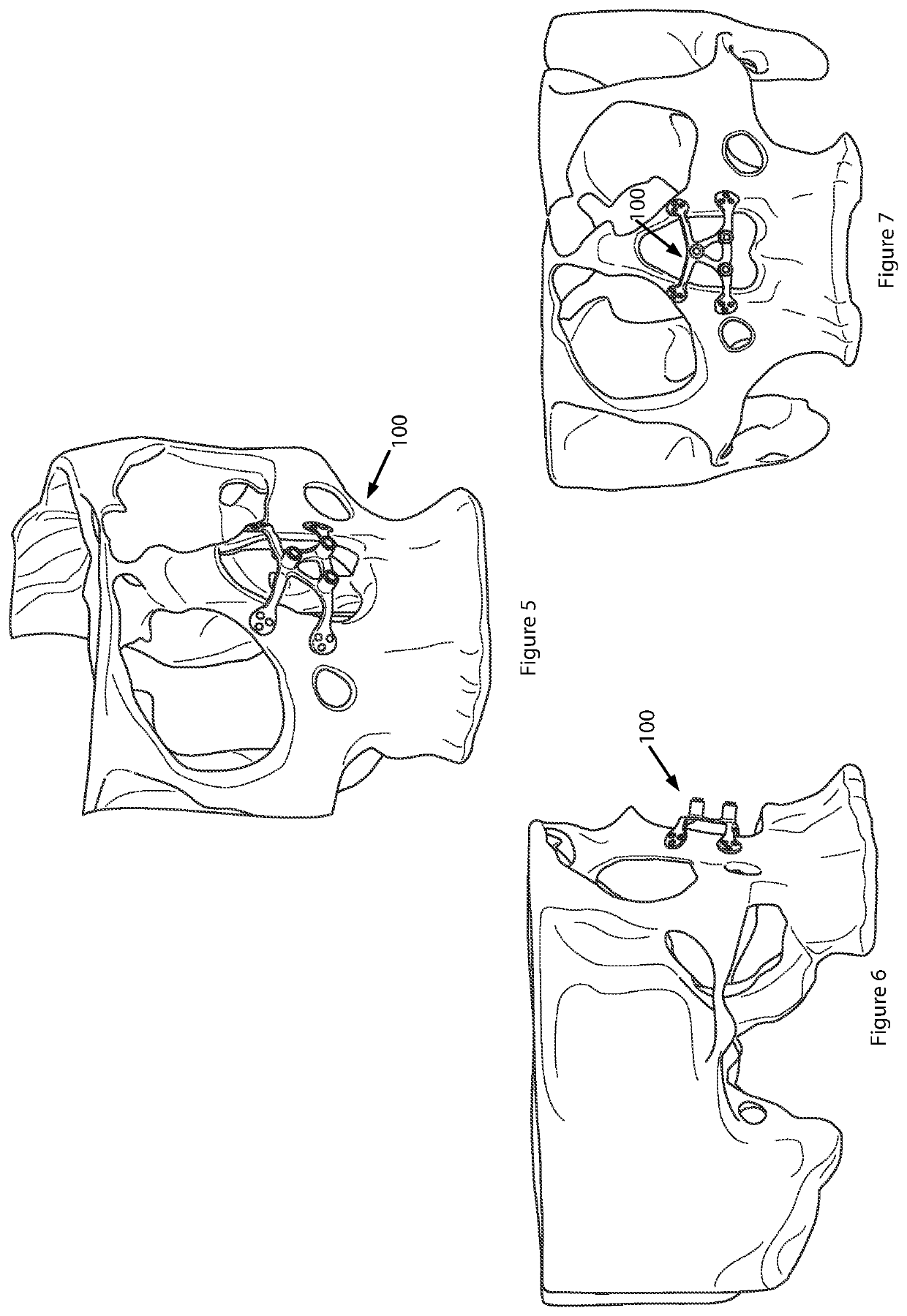Anchored implant for a nasal prosthesis
a technology for anchoring implants and prostheses, which is applied in the field of nasal prostheses, can solve the problems of affecting the patient's daily hygiene, the psychological impact of a missing external nose is devastating, and the patient is invariably a recluse, so as to prevent the pivot or rotational motion of the nasal prosthesis, the effect of encouraging regular hygien
- Summary
- Abstract
- Description
- Claims
- Application Information
AI Technical Summary
Benefits of technology
Problems solved by technology
Method used
Image
Examples
Embodiment Construction
[0041]FIG. 1 shows a top view of an anchored implant 100 for a nasal prosthesis in an embodiment which, for orientational convenience, will be described with reference to the orientational axes provided in FIG. 1 defining top / superior, bottom / inferior, side / lateral, front / anterior and rear / posterior reference points.
[0042]The implant 100 may be integrally formed of biocompatible material such as titanium.
[0043]The implant 100 comprises a central section 103 supporting at least three nasal prosthesis fixation points 106. In a preferred embodiment, the implant 100 has three nasal prosthesis fixation points 106 at a respective superior vertex 115 and two inferior lateral vertices 116.
[0044]Once the implant 100 is anchored, a nasal prosthesis (not shown) is affixed to the implant 100 at the fixation points 106.
[0045]In the preferred embodiment shown, the central section 103 is substantially triangular, thereby minimising cross-sectional area between the fixation points 106, thereby maxi...
PUM
 Login to View More
Login to View More Abstract
Description
Claims
Application Information
 Login to View More
Login to View More - R&D
- Intellectual Property
- Life Sciences
- Materials
- Tech Scout
- Unparalleled Data Quality
- Higher Quality Content
- 60% Fewer Hallucinations
Browse by: Latest US Patents, China's latest patents, Technical Efficacy Thesaurus, Application Domain, Technology Topic, Popular Technical Reports.
© 2025 PatSnap. All rights reserved.Legal|Privacy policy|Modern Slavery Act Transparency Statement|Sitemap|About US| Contact US: help@patsnap.com


